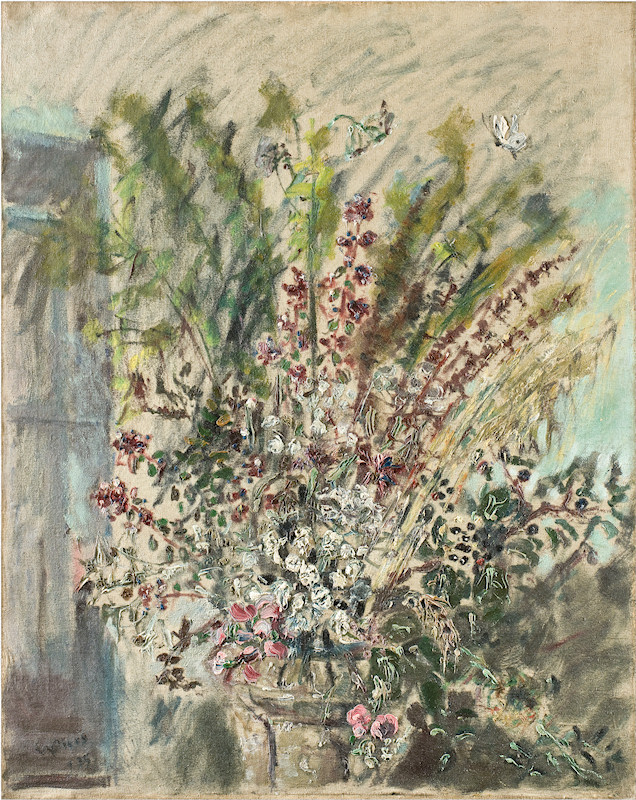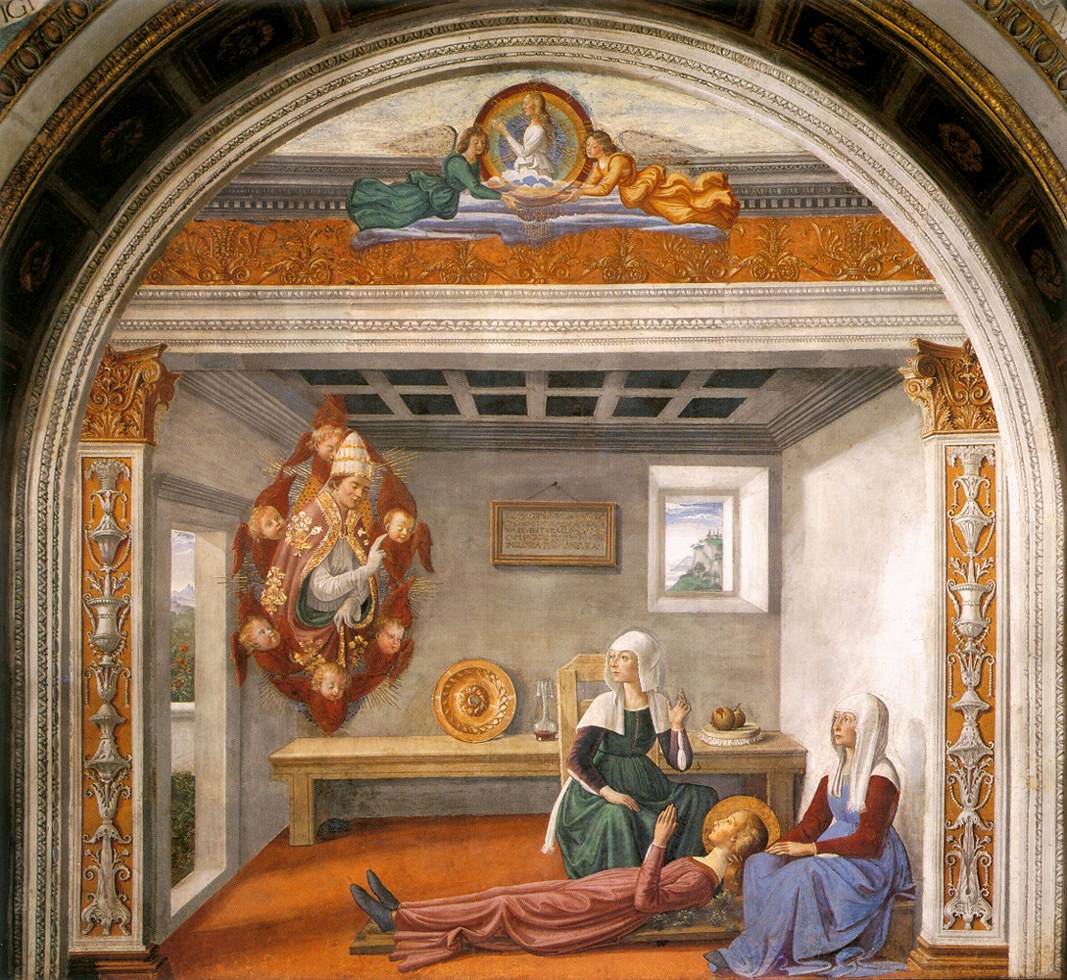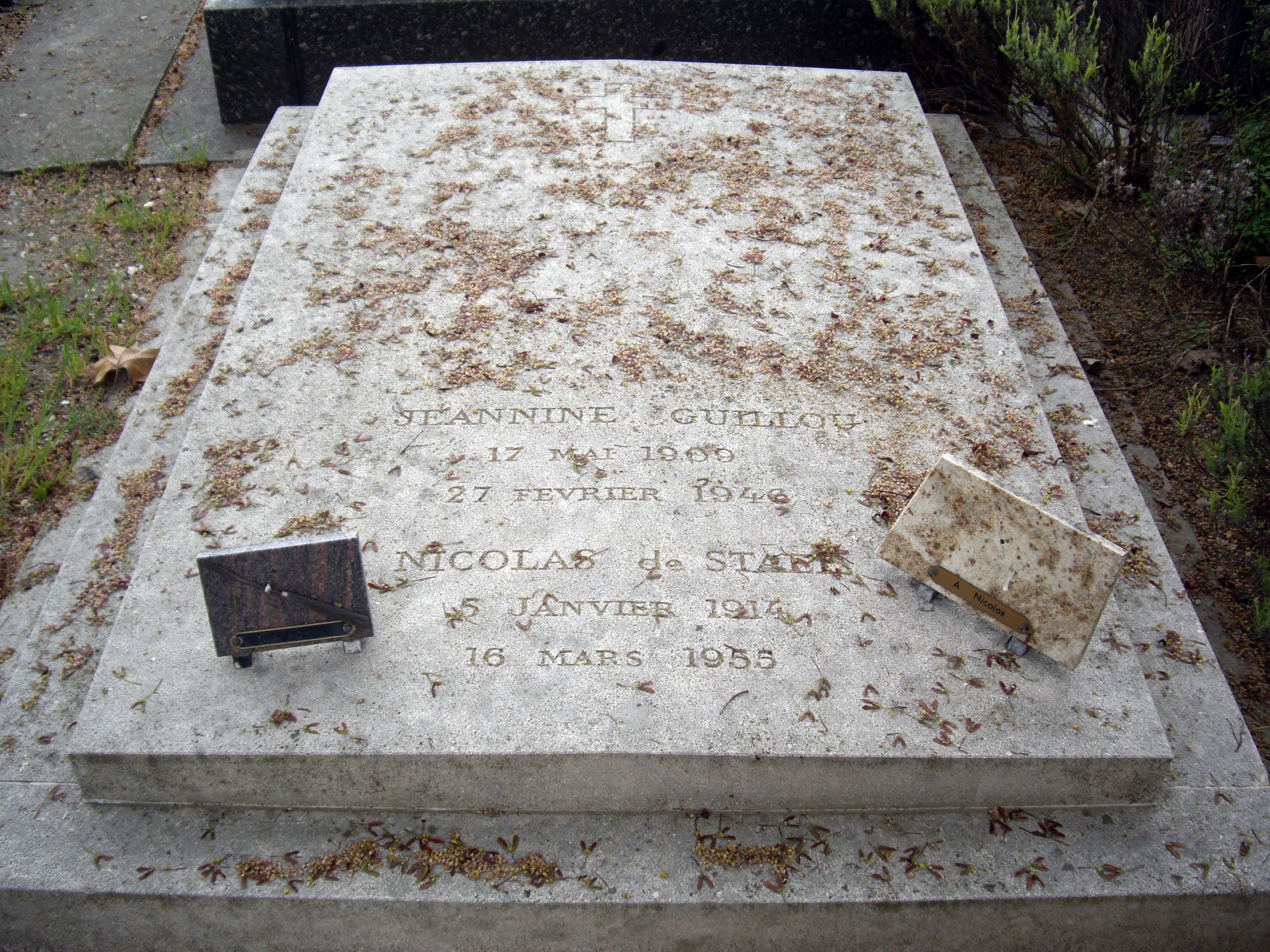|
Fondazione Magnani-Rocca
The Magnani-Rocca Foundation is a private collection of old masters and modern art, gathered by the art collector and critic Luigi Magnani. He established the foundation in 1978 honour of his father Giuseppe and his mother Eugenia Rocca to promote art, music and literary activities, though it was only from 1983 that he displayed his art collection to the public. It is housed in the Villa Magnani on via Fondazione Magnani Rocca 4 in Mamiano, a district of Traversetolo in the Province of Parma. The collection includes works by Gentile da Fabriano, Albrecht Dürer, Vittore Carpaccio, Titian, Rubens, Van Dyck, Francisco Goya, Claude Monet, Auguste Renoir, Paul Cézanne, Giorgio Morandi (50 works), Giorgio de Chirico, Filippo de Pisis, Gino Severini, Alberto Burri, Johann Heinrich Füssli, Nicolas de Staël, Lippo di Dalmasio, Filippo Lippi, Domenico Ghirlandaio, Lorenzo Costa, Martin Schongauer as well as sculptures by Antonio Canova Antonio Canova (; 1 November ... [...More Info...] [...Related Items...] OR: [Wikipedia] [Google] [Baidu] |
Parco Di Villa Magnani
Parco can refer to: * Parco, Tibet, a town in China * Parco (retailer), a chain of department stores primarily in Japan * Parco Historic District (also known as Sinclair Historic District), Sinclair, Wyoming, United States * Parco P.I., a reality television program * Pak-Arab Refinery (PARCO), an energy company in Pakistan * Jim Parco (born 1968), former United States Air Force lieutenant colonel * John Parco (born 1971), Italian-Canadian ice hockey player and coach See also * Parco is also Italian language, Italian for "park". For the numerous articles on parks in Italy see: ** ** * Parc (other) * Park (other) {{Disambiguation, geo, surname ... [...More Info...] [...Related Items...] OR: [Wikipedia] [Google] [Baidu] |
Filippo De Pisis
Filippo De Pisis (11 May 1896 – 2 April 1956) was an Italian painter and poet. Biography He was born Luigi Filippo Tibertelli in Ferrara. He studied literature and philosophy at the University of Bologna beginning in 1914.Gale, Matthew and Valerio Rivosecchi. "De Pisis, Filippo". ''Grove Art Online. Oxford Art Online''. Oxford University Press. In 1919 he moved to Rome, where he started to paint. He published a collection of his writings, ''La città dalle 100 meraviglie'', in 1920. While important editors of his time criticized De Pisis for producing overly-sentimental poetry, this emotional streak translated well on canvas. De Pisis is best known for his cityscapes, metaphysically-inspired maritime scenes, and still lifes, especially those depicting flowers. His work has a particularly airy, in-the-moment quality, and is laden with a sort of pathetic pleasure-pain. There are unexpected juxtapositions of scale and space, as when still-life objects are arranged on a surface ... [...More Info...] [...Related Items...] OR: [Wikipedia] [Google] [Baidu] |
Lorenzo Bartolini
Lorenzo Bartolini (Prato, 7 January 1777 Florence, 20 January 1850) was an Italian sculptor who infused his neoclassicism with a strain of sentimental piety and naturalistic detail, while he drew inspiration from the sculpture of the Florentine Renaissance rather than the overpowering influence of Antonio Canova that circumscribed his Florentine contemporaries. Biography Bartolini was born in Savignano di Prato, near Prato, Tuscany. After studying at the Florentine Academy of Fine Arts, honing his skills and reputation as a modeller in alabaster, he went in 1797 to Paris, where he studied painting under Jean-Baptiste Frédéric Desmarais, and afterwards sculpture under François-Frédéric Lemot. The bas-relief ''Cleobis and Biton'', with which he gained the second prize of the Academy in 1803, at once established his fame as a sculptor and gained for him a number of influential patrons. His bas-relief of the ''Battle of Austerlitz'' was among those executed for the column ere ... [...More Info...] [...Related Items...] OR: [Wikipedia] [Google] [Baidu] |
Antonio Canova
Antonio Canova (; 1 November 1757 – 13 October 1822) was an Italian Neoclassical sculptor, famous for his marble sculptures. Often regarded as the greatest of the Neoclassical artists,. his sculpture was inspired by the Baroque and the classical revival, and has been characterised as having avoided the melodramatics of the former, and the cold artificiality of the latter.Jean Martineau & Andrew Robinson, ''The Glory of Venice: Art in the Eighteenth Century.'' Yale University Press, 1994. Print. Life Possagno In 1757, Antonio Canova was born in the Venetian Republic city of Possagno to Pietro Canova, a stonecutter, and Maria Angela Zardo Fantolini.. In 1761, his father died. A year later, his mother remarried. As such, in 1762, he was put into the care of his paternal grandfather Pasino Canova, who was a stonemason, owner of a quarry, and was a "sculptor who specialized in altars with statues and low reliefs in late Baroque style". He led Antonio into the art of sculpt ... [...More Info...] [...Related Items...] OR: [Wikipedia] [Google] [Baidu] |
Martin Schongauer
Martin Schongauer (c. 1450–53, Colmar – 2 February 1491, Breisach), also known as Martin Schön ("Martin beautiful") or Hübsch Martin ("pretty Martin") by his contemporaries, was an Alsatian engraver and painter. He was the most important printmaker north of the Alps before Albrecht Dürer, a younger artist who collected his work. Schongauer is the first German painter to be a significant engraver, although he seems to have had the family background and training in goldsmithing which was usual for early engravers. The bulk of Schongauer's surviving production is 116 engravings, all with his monogram but none dated, which were well known not only in Germany, but also in Italy and even made their way to England and Spain. Vasari says that Michelangelo copied one of his engravings, in the '' Trial of Saint Anthony''. His style shows no trace of Italian influence, but a very clear and organised Gothic, which draws from both German and Early Netherlandish painting. Recent sc ... [...More Info...] [...Related Items...] OR: [Wikipedia] [Google] [Baidu] |
Lorenzo Costa
Lorenzo Costa (1460 – 5 March 1535) was an Italian painter of the Renaissance. Biography He was born at Ferrara, but moved to Bologna by his early twenties, and was probably influenced by the Bolognese School. However, many artists worked in both cities, and thus some consider him a product of the School of Ferrara. It is possible that he trained with Cosimo Tura. In 1483 he painted the famous ''Bentivoglio Altarpiece'' and other frescoes on the walls of the Bentivoglio chapel in San Giacomo Maggiore. He was a great friend of Francesco Francia, who was much influenced by him. In 1509 he moved to Mantua to become the court painter of Marquis Francesco Gonzaga and Isabella d'Este. For the latter's studiolo in the Ducal Palace, he painted the ''Allegory of Isabella d'Este's Coronation'' (now at the Louvre) and the '' Reign of Comus'', two mythological paintings based on Mantegna's drawings. He died at Mantua in 1535. His sons Ippolito and Girolamo were also painters, a ... [...More Info...] [...Related Items...] OR: [Wikipedia] [Google] [Baidu] |
Domenico Ghirlandaio
Domenico di Tommaso Curradi di Doffo Bigordi (, , ; 2 June 1448 – 11 January 1494), professionally known as Domenico Ghirlandaio, also spelled as Ghirlandajo, was an Italian Renaissance painter born in Florence. Ghirlandaio was part of the so-called "third generation" of the Florentine Renaissance, along with Verrocchio, the Pollaiolo brothers and Sandro Botticelli. Ghirlandaio led a large and efficient workshop that included his brothers Davide Ghirlandaio and Benedetto Ghirlandaio, his brother-in-law Bastiano Mainardi from San Gimignano, and later his son Ridolfo Ghirlandaio. Many apprentices passed through Ghirlandaio's workshop, including the famous Michelangelo. His particular talent lay in his ability to posit depictions of contemporary life and portraits of contemporary people within the context of religious narratives, bringing him great popularity and many large commissions.Toman, Rolf Life and works Early years Ghirlandaio was born Domenico di Tommaso di ... [...More Info...] [...Related Items...] OR: [Wikipedia] [Google] [Baidu] |
Filippo Lippi
Filippo Lippi ( – 8 October 1469), also known as Lippo Lippi, was an Italian painter of the Quattrocento (15th century) and a Carmelite Priest. Biography Lippi was born in Florence in 1406 to Tommaso, a butcher, and his wife. He was orphaned when he was two years old and sent to live with his aunt Mona Lapaccia. Because she was too poor to rear him, she placed him in the neighboring Carmelite convent when he was eight years old. There, he started his education. In 1420 he was admitted to the community of Carmelite friars of the Priory of Our Lady of Mount Carmel in Florence, taking religious vows in the Order the following year, at the age of sixteen. He was ordained as a priest in approximately 1425 and remained in residence of that priory until 1432. Giorgio Vasari, the first art historian of the Renaissance, writes that Lippi was inspired to become a painter by watching Masaccio at work in the Carmine church. Lippi's early work, notably the Tarquinia Madonna (Galle ... [...More Info...] [...Related Items...] OR: [Wikipedia] [Google] [Baidu] |
Lippo Di Dalmasio
Filippo Scannabecchi (1352 – c. 1410), known as Lippo di Dalmasio, was an Italian painter from Bologna, a son of Dalmasio Scannabecchi. Biography His father was Dalmasio Scannabecchi (sometimes referred to as ''pseudo-Dalmasio''), a Bolognese painter from a minor noble family who migrated to Pistoia during a period of Guelph rule in Bologna.Pini p. 56 Lippo presumably trained both with his father and his paternal uncle Simone dei Crocefissi. While still a boy he was accompanied to Pistoia by his uncle. Recorded as a Bolognese citizen resident in Pistoia in 1377 (and present in both Bologna and Pistoia in 1385) he eventually returned to Bologna in 1389. Part of the school of Vitale da Bologna, he was also influenced by Tuscan artists such as Andrea di Cione (Orcagna) and his brothers Jacopo and Nardo. Between 1391 and 1410 he painted many depictions of the Virgin and Child, some of which are signed. These led to him being nicknamed in the 16th century Lippo delle Madonne ... [...More Info...] [...Related Items...] OR: [Wikipedia] [Google] [Baidu] |
Nicolas De Staël
Nicolas de Staël (; January 5, 1914 – March 16, 1955) was a French painter of Russian origin known for his use of a thick impasto and his highly abstract landscape painting. He also worked with collage, illustration and textiles. Early life Nicolas de Staël was born Nikolai Vladimirovich Stael von Holstein (russian: Николай Владимирович Шталь фон Гольштейн) in Saint Petersburg, into the family of a Russian Lieutenant General, Baron Vladimir Stael von Holstein, (a member of the Staël von Holstein family, and the last Commandant of the Peter and Paul Fortress) and his second wife, Lubov Vladimirovna Berednikova (his first wife was Olga Sakhanskaya). De Staël's family was forced to emigrate to Poland in 1919 because of the Russian Revolution; both his father and stepmother died in Poland and the orphaned Nicolas de Staël was sent with his older sister Marina to Brussels to live with a Russian family (1922). Career beginnings He eventually ... [...More Info...] [...Related Items...] OR: [Wikipedia] [Google] [Baidu] |
Johann Heinrich Füssli
Henry Fuseli ( ; German: Johann Heinrich Füssli ; 7 February 1741 – 17 April 1825) was a Swiss painter, draughtsman and writer on art who spent much of his life in Britain. Many of his works, such as ''The Nightmare'', deal with supernatural subject matter. He painted works for John Boydell's Shakespeare Gallery, and created his own "Milton Gallery". He held the posts of Professor of Painting and Keeper at the Royal Academy. His style had a considerable influence on many younger British artists, including William Blake. Biography Fuseli was born in Zürich, Switzerland, the second of 18 children. His father was Johann Caspar Füssli, a painter of portraits and landscapes, and author of ''Lives of the Helvetic Painters''. He intended Henry for the church, and sent him to the Caroline college of Zurich, where he received an excellent classical education. One of his schoolmates there was Johann Kaspar Lavater, with whom he became close friends. After taking orders in 17 ... [...More Info...] [...Related Items...] OR: [Wikipedia] [Google] [Baidu] |
Alberto Burri
Alberto Burri (12 March 191513 February 1995; ) was an Italian visual artist, painter, sculptor, and physician based in Città di Castello. He is associated with the matterism of the European informal art movement and described his style as a polymaterialist. He had connections with Lucio Fontana's spatialism and, with Antoni Tàpies, an influence on the revival of the art of post-war assembly in America (Robert Rauschenberg) as in Europe. Life In the “Overrated and Underrated” column published by the American art magazine ARTnews, Alberto Burri's name is often mentioned. Carolyn-Christov-Bakargiev mentioning him in the January 2005 issue for example. Alberto Burri was born on 12 March 1915 in Città di Castello, in Umbria to Pietro Burri, a tuscan wine merchant, and Carolina Torreggiani, an umbrian elementary school teacher. In 1935, Burri attended a government High school in Arezzo living as a boarder in a pension, and as his school reports noted, he studied Classics ... [...More Info...] [...Related Items...] OR: [Wikipedia] [Google] [Baidu] |


.jpg)




